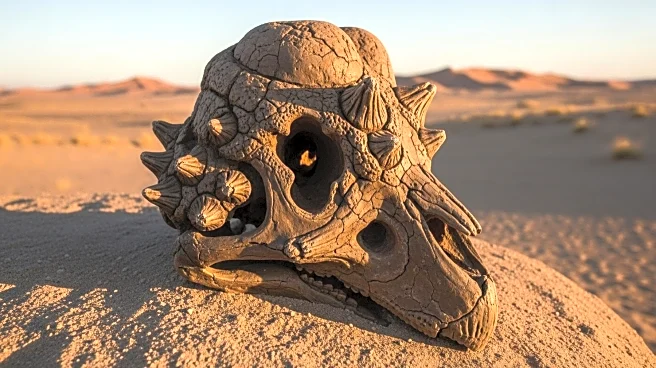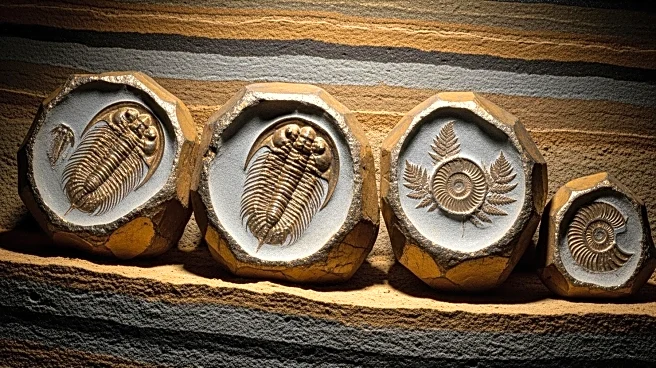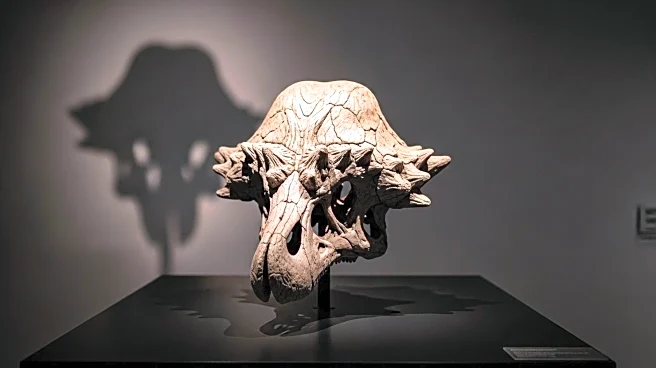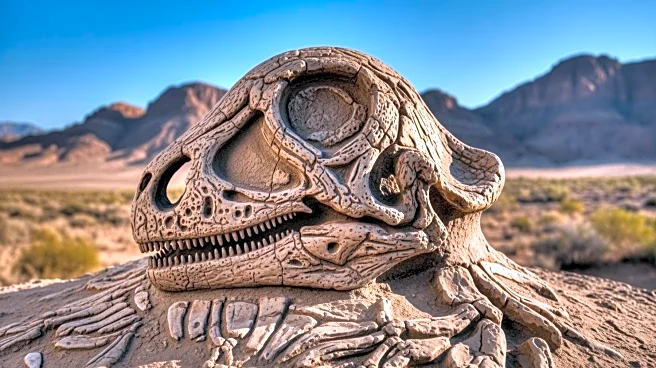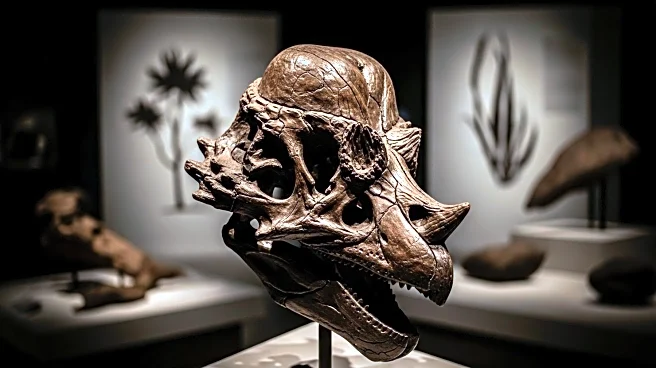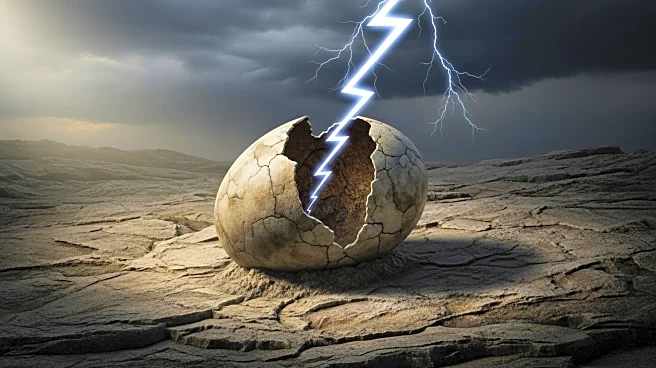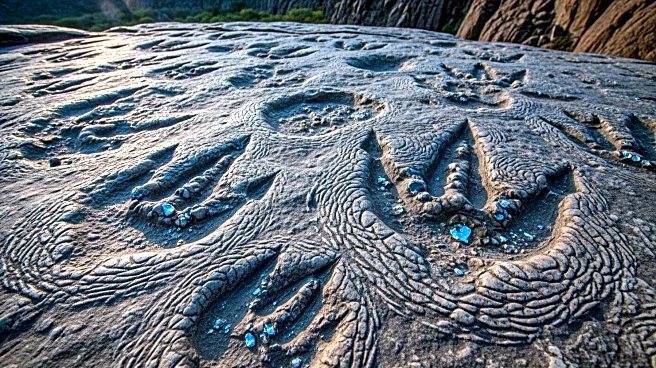What's Happening?
A newly discovered fossil from Mongolia's Gobi Desert is providing significant insights into the evolution of pachycephalosaurs, a group of dinosaurs known for their distinctive domed skulls. The fossil, identified as a new species named Zavacephale rinpoche, is the oldest and most complete skeleton of this dinosaur group found to date. Discovered by Tsogtbaatar Chinzorig from the Mongolian Academy of Sciences, the specimen predates all known pachycephalosaur fossils by about 15 million years. Despite being a juvenile, the fossil already had a fully formed dome, offering new information on the cranial development of these dinosaurs. The research, led by Lindsay Zanno from North Carolina State University, highlights the importance of this find in understanding the growth stages and anatomical features of pachycephalosaurs.
Why It's Important?
The discovery of Zavacephale rinpoche is crucial for paleontologists as it fills significant gaps in the timeline and growth understanding of pachycephalosaurs. This fossil provides a rare opportunity to study a complete skeleton, including limbs and a skull, which is uncommon for this dinosaur group. The insights gained from this specimen could reshape theories about the socio-sexual behaviors of pachycephalosaurs, particularly their use of domed skulls for mating displays rather than defense. Additionally, the fossil's completeness allows researchers to explore aspects of pachycephalosaur biology, such as their use of stomach stones for digestion and their locomotion, offering a more comprehensive view of their lifestyle and evolution.
What's Next?
The findings from Zavacephale rinpoche are expected to lead to further research into the evolutionary history and biological characteristics of pachycephalosaurs. Scientists may conduct additional studies to compare this specimen with other pachycephalosaur fossils to better understand the diversity and adaptation strategies within this group. The research could also prompt new explorations in the Gobi Desert to uncover more fossils that might provide further insights into the early Cretaceous period and the ecosystems in which these dinosaurs lived.
Beyond the Headlines
The discovery of Zavacephale rinpoche not only advances scientific knowledge but also highlights the importance of international collaboration in paleontology. The joint efforts of researchers from Mongolia, the United States, and other countries underscore the global nature of scientific inquiry and the shared interest in uncovering Earth's prehistoric past. This collaboration may inspire future partnerships and funding opportunities to explore other regions rich in paleontological resources.


